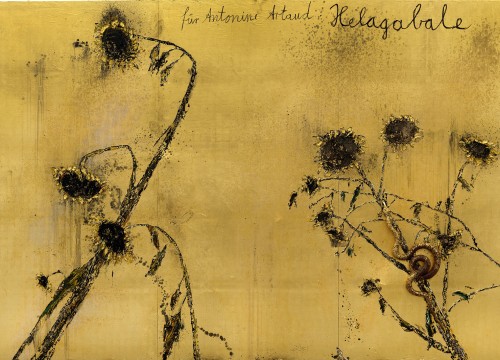Among the Themes He Deals with We Find the Burdensome Historical Legacy of Germany, German Mythology and the Links between Christianity and Hebraism
In light of the latest acquisitions of Kiefer artworks, the Kunsthalle have created a new museum layout
The Kunsthalle displays the recently acquired Anselm Kiefer’s artworks, creating a new museum layout. The works were part of the collection of Hans Grothe, a German construction magnate who died in 2019, that was mainly based on the German artists of the 60’s, sold with great fanfare to the former owners of the brand Wella. The exhibition, curated by Sebastian Braden, recreates the three main periods of the work of the artist born in Donaueschingen, in the Baden-Württemberg federal state, in 1945. The tour starts with the works he made in the 80’s, skipping the formation period of the ‘70s, influenced by the work of Joseph Beuys that he met in 1972, as evidenced by the provocative “actions” called Besetzungen (Occupations), from which he departed with the series of large paintings Deutschlands Geisteshelden (Heroic Germany), started in 1973, that he displayed at the Documenta in Kassel in 1977 and in 1982 and in the German pavilion during the Venice Biennal in 1982. The first exhibition area comprehends artworks such as Die Grosse Fracht (The Big Load, 1981- 1996) and depicts the period in which the main themes are defined, related to the burdensome legacy of the German nation, its mythology, the culture of memory and in which, in the large-scale paintings, appears the use of lead (the material of melancholy). The exhibition continues with the artworks made from 90’s, among which we find the installation Palmsonntag (Palm Sunday, 2007), developed in multiple parts.
His studio in the south of France is like an utter art museum in the Wagnerian Gesamtkunstwerk style
These artworks were made in the South of France, where, on the ruins of a former silk factory, he built in 1993 his gigantic studio, that has now become a sort of an utter museum/artwork in the Wagnerian Gesamtkunstwerk style. At that time he devoted himself to the study of the links between Christianity and Hebraism, the myths, the methods of mystical teaching and the instruments which are entrusted with cultural memory. The last section, in which stands out the large sculpture Der verlorene Buchstabe (The Lost Alphabet Letter, 2011-2017), culminates in 2017, the year when Kiefer received a commission for an artwork that would have entered in the permanent collection of the Louvre and he displayed in the prestigious Guggenheim in Bilbao. Paintings and sculpture also comprehensively depict the technical aspect, the haptic dimension of the materials he uses, like ash and lead and the intervention of nature, through the long-time exposure of the paintings to elements like wind and water and he uses flowers even dried and seeds.
Anselm Kiefer
Kunsthalle
Manheim
Curated by
Sebastian Baden
Until 06/06



























